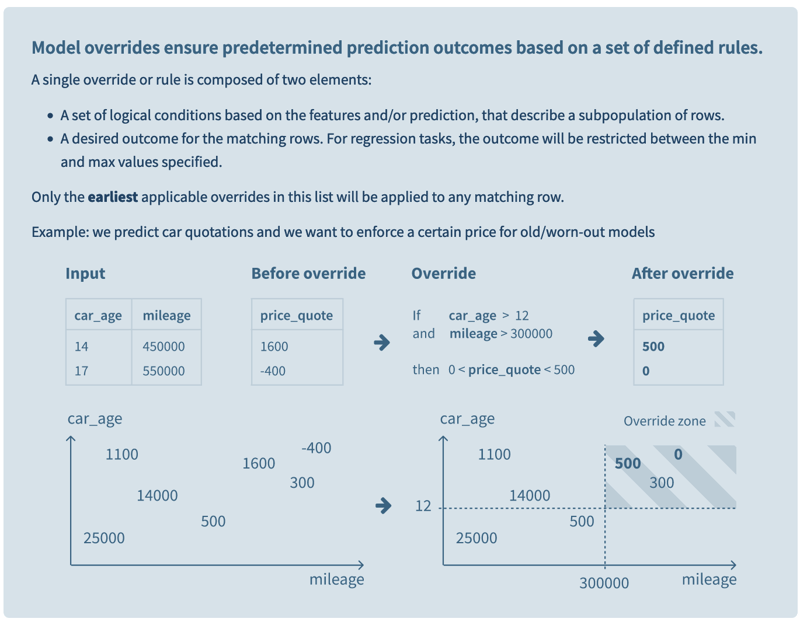In one of the flagship episodes of the 1980s series Knight Rider, the autonomous car KITT became uncontrollable, behaving erratically. The disaster was averted when Michael Knight finally regained control of KITT thanks to the manual override feature.

Much like the manual override button Michael employed to regain control of KITT, our model override feature in Dataiku provides data scientists with the ability to reclaim the driver's seat when necessary. Let's explore its capabilities further.
What Is Model Override?
Model override provides an answer to the question: How do you optimize a model's prediction by setting safeguards? Strictly speaking, model override allows data scientists to modify or adjust the output of a machine learning model, which proves particularly useful during the testing and validation phases. This can be done for a variety of reasons, such as to improve model performance, to account for changing business requirements, or to address bias or fairness concerns and adjust the model efficiency. This can especially be useful for high-risk models driving critical applications or decisions as well as in highly regulated industries.
Why Should I Care?
As models become prevalent in business and safety-critical domains, the risk of errors grows, jeopardizing stakeholder trust and hindering adoption. Without data scientist intervention, rigorous validation, or ongoing monitoring, organizations can suffer from a trust issue that can hinder the integration of models into various applications.
That's why it's important to apply override rules in the testing and validation phases of a model before it goes into production. Model override can also help address bias or fairness concerns in machine learning models. By modifying a model's behavior, data scientists and analysts can ensure that it is not discriminating against certain groups or individuals.
Once in production, model override can help ensure that machine learning models remain relevant and effective over time. As business requirements and data sources change, models may need to be adjusted to continue delivering accurate predictions.
Model Override in Practice
Let’s look at a real-world use case to see how model override works in practice. In this example, we want to predict car quotations (yes, KITT again ☺ ), and we want to enforce a certain price for old or worn-out vehicles.
Model overrides ensure predetermined prediction outcomes based on a set of defined rules. A single override or rule is composed of two elements:
- A set of logical conditions based on the features and/or prediction that describe a subpopulation of rows.
- A desired outcome for the matching rows. For regression tasks, the outcome will be restricted between the minimum and maximum values specified.
- Only the earliest applicable overrides in this list will be applied to any matching row.

It's often easiest to see for yourself. To do so, you can test this functionality free of charge on the Dataiku platform using the following tutorial from the ML Practitioner course. Or check out this great video highlighting model override:
Conclusion
Increasingly, model override holds significant importance in the context of securely deploying AI with transparency. It’s one of the powerful features of Dataiku's visual analysis capabilities, appealing to low and advanced coders alike. Dataiku also provides robust model monitoring and management capabilities, making it easy to test and monitor model performance over time and ensure that model scenarios are working as intended. All of which ensure that the data scientist is no longer a lone crusader but the real team hero of trusted AI In the modern organization.




